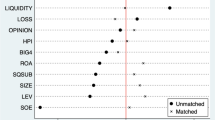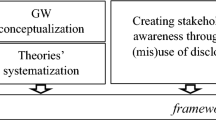Abstract
In this paper we develop a theoretical framework for determining whether laws designed to reduce lead paint risk are consistent with efficiency. We do this in the context of both owner-occupied and rental housing, and under different informational scenarios depending on who has knowledge about the risk. Our results suggest that efficient lead paint laws would impose on property owners and landlords a duty to notify buyers and tenants about known risks but would not impose on them a duty to inspect for or abate the risk. Our review of the existing law shows that common law standards are largely consistent with efficiency, but statutory law is not.
Similar content being viewed by others
References
Coase, R. “The Problem of Social Cost.” Journal of Law and Economics 3 (1960) 1–44.
Cooter, R. and T. Ulen. Law and Economics. Harper-Collins, 1988.
DeGeest, G. “The Provision of Public Goods in Apartment Buildings.” International Review of Law and Economics 12 (1992) 299–315.
Environmental Strategies for Real Estate. Vol. 1 (11), August 1994.
Gilligen, M., and D.A. Ford. “Investor Response to Lead-Based Paint Abatement Laws.” Columbia Journal of Environmental Law 12 (1987) 243–290.
Henderson, J., and Y. Ioannides. “A Model of Housing Tenure Choice.” American Economic Review 73 (1983) 98–113.
Hey, J. Uncertainty in Microeconomics. New York University Press, 1979.
Holmstrom, B. “Moral Hazard and Observability.” Bell Journal of Economics 10 (1979) 74–91.
Kaplow, L., and S. Shavell. “Why the Legal System Is Less Efficient Than the Income Tax in Redistributing Income.” Journal of Legal Studies 23 (1994) 667–681.
Landes, W., and R. Posner. “A Positive Economic Analysis of Products Liability.” Journal of Legal Studies 14 (1985) 535–567.
Landes, W., and R. Posner. The Economic Structure of Tort Law. Harvard University Press, 1987.
Marino, A. “Products Liability and Scale Effects in a Long-Run Competitive Equilibrium.” International Review of Law and Economics 8 (1988) 97–107.
Miceli, T. “Habitability Laws for Rental Housing: The Impact of Tenant Inputs.” Urban Studies 29 (1992) 15–24.
Miceli, T., and K. Segerson. “Defining Efficient Care: The Role of Income Distribution.” Journal of Legal Studies 24 (1995) 189–208.
Posner, R. Economic Analysis of Law. 4th Ed., Little, Brown, 1992.
Spence, M. “Consumer Misperceptions, Product Failure, and Producer Liability.” Review of Economic Studies 44 (1977) 561–572.
Shavell, S. “Liability and the Incentive to Obtain Information About Risk.” Journal of Legal Studies 21 (1992) 259–270.
Author information
Authors and Affiliations
Rights and permissions
About this article
Cite this article
Miceli, T.J., Pancak, K.A. & Sirmans, C.F. An economic analysis of lead paint laws. J Real Estate Finan Econ 12, 59–75 (1996). https://doi.org/10.1007/BF00127766
Issue Date:
DOI: https://doi.org/10.1007/BF00127766




